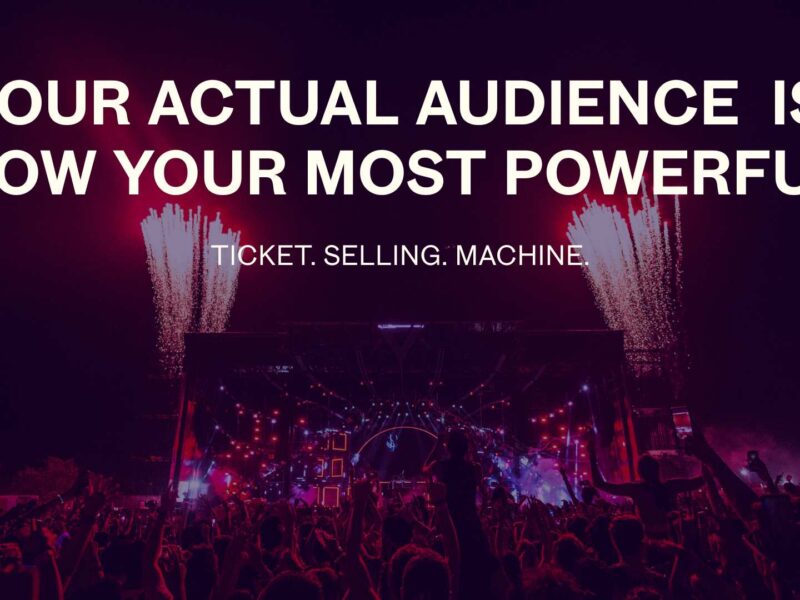In today’s data-driven world, the performing arts industry is no exception when it comes to leveraging insights to enhance audience engagement and event success. Data analytics has become a crucial tool for arts marketers, providing valuable information about audience behavior, preferences, and interactions. With the rise of digital program books, performing arts organizations now have unprecedented access to real-time data that can be used to refine their strategies and improve future events. In this blog, we’ll explore how arts marketers can use data analytics from digital programs to make informed decisions that lead to more successful and engaging events.
The Importance of Data Analytics in the Performing Arts
Data analytics plays a vital role in helping performing arts organizations understand their audiences on a deeper level. By analyzing data, marketers can gain insights into what content resonates most with audiences, how they engage with different aspects of the event, and what drives their decisions. These insights are invaluable for making informed decisions about future programming, marketing campaigns, and event logistics. In an industry where audience engagement is key to success, data-driven decision-making can provide a competitive edge.
Types of Data Available from Digital Programs
Digital program books offer a wealth of data that can be analyzed to improve future events. Here are some key types of data that arts marketers should focus on:
Engagement Metrics:
- Time Spent on Pages: One of the most telling metrics is how long audiences spend on different sections of the digital program. This data reveals which content captures their attention and which might need improvement.
- Click-Through Rates (CTR): Tracking the effectiveness of links within the digital program, such as those leading to videos, ticket sales, or additional content, provides insights into what prompts further audience action.
Content Preferences:
- Most Viewed Sections: Identifying the most popular sections of the program, such as artist bios, director’s notes, or interactive features, helps you understand what your audience values most.
- User Interaction: Analyzing how audiences interact with features like polls, quizzes, or social media links can offer clues about how to enhance engagement in future events.
Audience Demographics:
- Geographical Data: Understanding where your audience is located can help with event planning, marketing outreach, and even content customization.
- Device Usage: Knowing whether users access the program via mobile, tablet, or desktop can inform how you design future digital content to ensure the best user experience.
How to Collect and Analyze Data from Digital Programs
Collecting and analyzing data from digital programs starts with setting up the right tools and defining your goals. Here’s how to get started:
Setting Up Analytics Tools:
- Integrating with Existing Platforms: Ensure your digital program platform is integrated with analytics tools like Google Analytics or similar services that allow you to track user behavior and engagement.
- Defining Key Performance Indicators (KPIs): Identify the most important metrics to track, such as time spent on pages, CTR, and user interaction rates, based on your organizational goals.
Interpreting the Data:
- Analyzing Engagement Patterns: Look for patterns in how your audience interacts with the digital program. For example, if a particular video consistently garners high engagement, consider featuring more content like it in future programs.
- Identifying Trends: Track recurring trends across multiple events to refine your strategies. For instance, if you notice that certain types of content perform better at specific times, you can adjust your event schedules accordingly.
Applying Data Insights to Improve Future Events
Once you’ve collected and analyzed your data, it’s time to put those insights to work. Here’s how you can use data analytics to enhance future events:
Tailoring Content to Audience Preferences:
- Content Optimization: Use data to refine the content included in future programs. Focus on the types of content that have shown high engagement, such as behind-the-scenes videos or artist interviews.
- Interactive Features: If data shows that audiences engage heavily with interactive elements, consider incorporating more polls, quizzes, or social media integrations into your programs.
Optimizing Marketing Strategies:
- Targeted Campaigns: Utilize demographic data to create more targeted marketing campaigns. For example, if you know that a large portion of your audience is located in a specific area, you can tailor your outreach efforts to that region.
- Personalized Communication: Leverage engagement data to personalize your email and text messaging campaigns. Sending targeted messages based on user behavior increases the likelihood of audience engagement.
Enhancing Event Logistics:
- Improving Audience Flow: Use geographical data to optimize seating arrangements, parking options, and other logistical aspects of your event, ensuring a smoother experience for attendees.
- Scheduling Adjustments: If your data reveals peak engagement times, consider adjusting your event schedules to align with those periods, maximizing audience attendance and participation.
Case Studies/Examples
To illustrate the impact of data analytics, let’s look at a few examples of performing arts organizations that have successfully used these insights to improve their events:
Success Stories:
- A regional theater company used data analytics to discover that their audience spent the most time on artist bios and videos. In response, they enhanced these sections in future digital programs and saw a 20% increase in audience engagement.
- Another performing arts organization found that their audiences frequently clicked on links to upcoming events when these were placed at the end of artist interviews. By strategically placing more of these links, they were able to boost ticket sales for future performances.
Lessons Learned:
- These organizations learned that by closely monitoring audience behavior and preferences, they could make targeted improvements that directly influenced the success of their events. The key takeaway is that data-driven decisions lead to better outcomes.
Challenges and Considerations
While data analytics offers many benefits, it’s important to consider some potential challenges:
Data Privacy:
- Protecting audience data is paramount. Ensure that your data collection methods comply with privacy regulations and that any personal information is handled with care.
Avoiding Data Overload:
- With so much data available, it’s easy to become overwhelmed. Focus on the most relevant metrics that align with your organizational goals to avoid data overload.
Balancing Data with Creativity:
- While data provides valuable insights, it’s essential to balance data-driven decisions with creative intuition. Use data to inform your choices, but don’t be afraid to experiment and innovate.
Conclusion
Data analytics from digital programs provides arts marketers with the tools they need to make more informed decisions, leading to more successful and engaging events. By understanding audience behavior, preferences, and demographics, performing arts organizations can tailor their content, optimize their marketing strategies, and enhance event logistics. The result is a more personalized and impactful experience for the audience, driving higher engagement and greater success for your events.
As the performing arts industry continues to evolve, embracing data analytics will be key to staying competitive and meeting the needs of modern audiences. If you’re ready to take your event planning to the next level, explore how digital program platforms like Audience Access can help you collect and leverage data to enhance future events. Reach out to us today to learn more!


